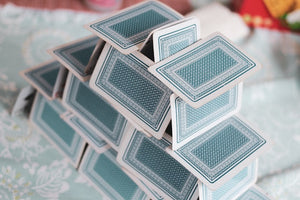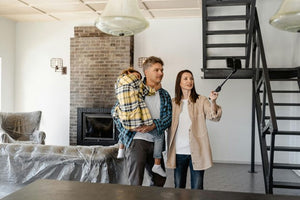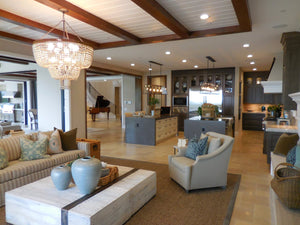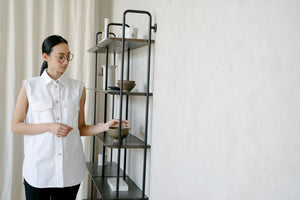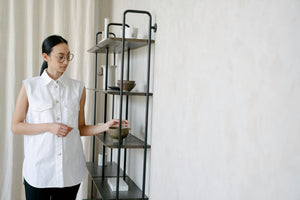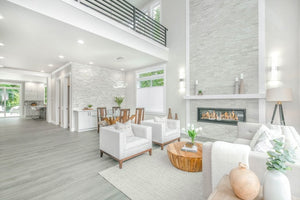The Power of Placement: Using Feng Shui Principles in Home Staging

The Power of Placement: Using Feng Shui Principles in Home Staging - Discover the hidden harmony in your living space with the transformative power of Feng Shui. You're not just arranging furniture when using Feng Shui principles in home staging. You're orchestrating energy for a life brimming with positivity and serenity.
As an ancient art, Feng Shui is our secret weapon for home staging that feels less like a chore and more like a spiritual journey. You're fostering balance and inviting prosperity with every well-placed chair or lovingly selected color scheme. Stay with us as we explore the intriguing, accessible, and undeniably compelling world of Feng Shui home staging. Prepare to turn 'house' into 'home' with intention and grace.
Unleashing Harmony: Using Feng Shui Principles in Home Staging
The Feng Shui Foundation
Before embracing the use of Feng Shui principles when home staging, it's crucial to grasp what Feng Shui truly encapsulates. Rooted in ancient China, Feng Shui, meaning "wind and water," is a time-honored art that aims to balance people and their environment. This philosophy revolves around "Chi," or energy flow, and its effects on our prosperity and overall well-being. Feng Shui isn't merely an interior design technique—it's a philosophy that weaves balance and positivity into our living spaces.
A Closer Look at the Five Elements
At the core of Feng Shui are the five elements of nature—Wood, Fire, Earth, Metal, and Water. Each element echoes different facets of human life and must be proportionately represented within your home to achieve an optimum energy balance. For example, Wood signifies growth and creativity, while Earth symbolizes stability and nourishment. Balancing these elements can make your home visually appealing and a sanctuary of harmonious energy.
The Intricacies of Feng Shui Home Staging
Moving forward, let's delve into the practical aspect: using Feng Shui principles when home staging. The aim is to design a space that resonates with balance and warmth, making prospective buyers or visitors feel at ease, thereby establishing an emotional connection with the environment. Here's a step-by-step guide to achieving this:
Embark on a Decluttering Mission
The first and foremost principle of Feng Shui is decluttering. A cluttered home represents a cluttered mind and obstructs the smooth flow of Chi.
Thus, begin your home staging process by purging items that no longer serve you or hold negative memories. This initial clean-up act paves the way for a positive energy flow, forming the perfect canvas for staging your home.

If you're wondering where to start to declutter your home, here are some valuable tips:
- Start the process one room at a time. That helps you keep things organized and not feel overwhelmed.
- Dispose of expired medicines and perishable items. Sort the rest between what you need, what you can give, and what you can throw away.
- Check for unused items or electronics and decide whether to keep, donate, or dispose of them.
- Sort your clothes into daily, occasional, and items you no longer use. Be ruthless with clothes, blankets, sheets, and pillows you haven't used in the last six months.
- Discard expired spices and evaluate kitchen appliances. If there are appliances you haven't used for a while, give them away or dispose of them to make your kitchen professionally staged.
Play with Colors Mindfully
Colors are not just for visual pleasure; they carry symbolic meanings. For instance, green promotes growth and renewal, while blue instills calm and tranquility. Before you decide on the color palette for each room, think about the emotions you wish to evoke. Choosing color schemes in line with Feng Shui principles can significantly enhance the overall mood of your home.
Harmonize the Five Elements
Integrating the five elements in each room is crucial to using Feng Shui principles in home staging. For example, a room might feature a wooden bookshelf (Wood), a vibrant rug (Fire), a ceramic pot (Earth), a metal lamp (Metal), and an aquarium or water painting (Water). The interplay of these elements can create a balanced, appealing space that exudes inviting energy.
Welcome Natural Light and Fresh Air
Light and air are the life force of a home. Natural light illuminates spaces and uplifts the mood, while fresh air brings in the new Chi and drives out stagnant energy. Open your windows to let fresh air circulate and make your home smell better, and pull back the curtains to let sunshine permeate your space.
Utilize Mirrors for Expansion and Reflection
Mirrors are considered powerful tools in Feng Shui. They can double the positive energy, reflect natural light, and make a room appear larger and brighter. Position mirrors to reflect pleasing views or visually expand a space, enhancing attractiveness.

The Power of Personal Touch
Don't forget to add a personal touch when using Feng Shui principles for your home staging. Infuse the space with elements that reflect your personality and make it feel lived-in. That can be as simple as displaying a stack of your favorite books, showcasing family photos, or arranging your treasured collection of artifacts. Remember, home staging is not just about creating a 'show home' but about presenting a cozy, inviting environment where potential buyers can visualize their life unfolding.

The Importance of a Strong Front Entrance
In Feng Shui, the front entrance, also known as the 'mouth of Chi,' is where all the energy enters your home. Make your front door inviting by keeping it clean, well-lit, and free of obstructions. A colorful front door, a welcoming doormat, and an assortment of potted plants can create a pleasant first impression, setting the tone for what's inside.
Balance Yin and Yang
Yin and Yang represent the dualities in life—dark and light, passive and active, soft and hard. Strive to balance these energies in your home staging. For instance, pair hard furniture with soft furnishings, or balance dark colors with lighter hues. The dance of Yin and Yang energies can evoke a sense of calmness and completeness in your space.
Wrapping it up
The journey of using Feng Shui principles in home staging can seem overwhelming at first. Still, as you begin, it evolves into an enlightening journey of establishing harmony, enhancing energy, and creating a space that looks and feels good. Feng Shui is not about strict rules—it's about creating a home that resonates with positive vibes and feels welcoming to others. Remember, home staging with Feng Shui is not a one-size-fits-all solution; it's about understanding the principles and adapting them to your space for a balanced, harmonious living environment. After all, a balanced home is a happy home, and a happy home is an inviting home.
- Home Staging Warehouse

